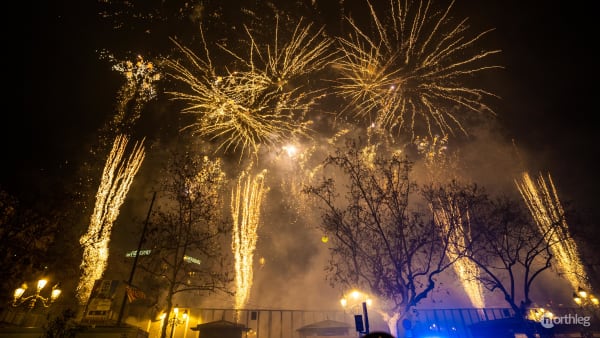The Virgin’s statue
The Virgin’s statue
The Virgen de los Desamparados (Virgin of the Forsaken, in English) is the patroness of Valencia, to whom the Basilica in Plaça de la Mare de Déu and the Ofrenda de Flores itself are dedicated. On the occasion of the Fallas’ Offering, a 15 metres (about 49 feet) tall statue in the likeness of the Virgin is built and put in the square.
She appears with lily blossoms and a rose in one hand and baby Jesus in her other arm. Her gown is to be covered with the flowers offered by the falleros. She is generally depicted looking down, and her posture is slightly tilted forward. This has earned her the affectionate name of Geperudeta (or Jorobadita) de Valencia, meaning the little hunchback of Valencia*.*

If the year is particularly hot and sunny, you’ll also see that a huge canopy will be hung from one side to the other of the square. This is to keep the flowers in the shade and prevents them from wilting.
The guidelines
This tradition of a secret image has been around since the 1990s, when a premeditated design was first introduced. Ever since then, the techniques have improved and new guidelines have been established.
For example, any thorns or hooks in the bouquets must be removed, so that the workers don’t get hurt. Cellophane paper is also forbidden since it can become slippery and hard to see on the ground.
To ensure the success of the design, the flowers used are carnations (they last the longest), with red and white being the most popular colours. The Junta Central Fallera tasks each committee with a specific colour to make sure that the right ratio is respected.

Los vestidors
The vestidors (or vestidores, in Spanish) are the men and women who volunteer every year to design and dress the Virgin’s mantle in spectacular designs. There are about 50 of them, of all ages between 16 and 60 years old. The more experienced among them, who usually take care of making the outline of the design, are also called bordadores.

When the first Virgin mantle was instituted in 1987, the vestidores were a small group of friends, mostly with lifeguarding and mountaineering experience, which they needed to be able to climb up the 15-metre (about 49 feet) structure to hang the flowers. Slowly, the tradition was passed from parents to children, the group expanded, and their craft was perfected.
Nowadays, this still remains a work of passion and devotion to them. The rest of the year they all have regular jobs, some of them as taxi drivers, some as nurses, and some are even retired.
















